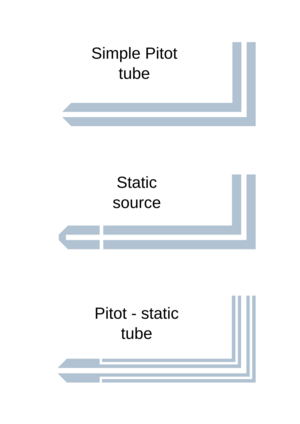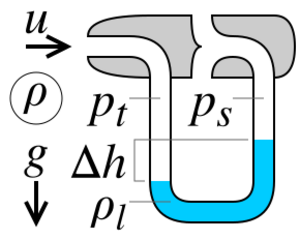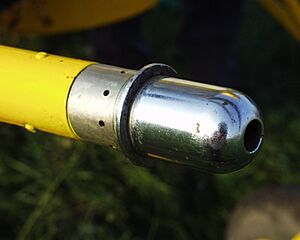Pitot tube facts for kids
A pitot tube (pronounced PEE-toh) is a clever device that measures how fast a fluid, like air or water, is moving. It's also called a pitot probe. A French engineer named Henri Pitot invented it in the early 1700s. Later, in the mid-1800s, another French scientist, Henry Darcy, improved it.
Today, pitot tubes are super important! They help pilots know the airspeed of their aircraft. They also measure the speed of boats in water and how fast liquids or gases flow in factories.
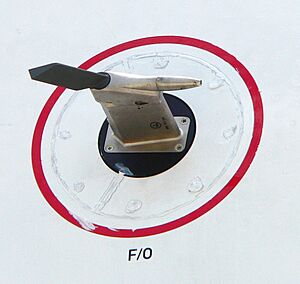

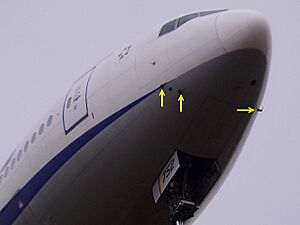
Contents
How a Pitot Tube Works
A basic pitot tube is just a tube that points directly into the moving air or water. When the fluid hits the opening of the tube, it stops moving inside. This creates a special kind of pressure called stagnation pressure or total pressure. Think of it like putting your hand out of a car window; you feel the pressure of the air pushing against it.
But the stagnation pressure alone isn't enough to know the speed. We also need to know the static pressure. This is the normal pressure of the fluid when it's not being stopped.
The difference between the stagnation pressure and the static pressure is called dynamic pressure. This dynamic pressure is directly related to how fast the fluid is moving. The faster the fluid, the bigger the dynamic pressure.
Measuring Airspeed in Aircraft
In airplanes, the static pressure is usually measured by small holes called static ports on the side of the plane's body. The pitot tube measures the stagnation pressure at the front.
Inside the plane, an instrument called an airspeed indicator uses these two pressures. It has a special part that moves based on the dynamic pressure. This movement is then shown as the plane's speed on a dial.
Sometimes, a single device called a pitot-static tube (or Prandtl tube) is used. It combines both the pitot tube and the static ports into one unit. This makes it easier to install and use.
Pitot Tubes and Aircraft Safety
A system using pitot tubes and static ports is called a pitot-static system. This system is vital for aircraft. It helps pilots know their airspeed, altitude (how high they are), and how fast they are climbing or descending.
If the pitot-static system doesn't work right, it can be very dangerous. Pilots rely on this information to fly safely.
Real-Life Incidents
There have been several serious airplane accidents caused by problems with pitot tubes. For example:
- In one accident, investigators believed that insects, like wasps, built a nest inside a pitot tube, blocking it. This gave the pilots wrong speed readings.
- In another sad event, cleaning tape was accidentally left covering the static ports on a plane. This also led to incorrect speed information and a crash.
- Icing can also be a problem. If ice forms on the pitot tube, it can block it and cause the system to fail. This was a factor in the crash of Air France Flight 447 over the Atlantic Ocean.
These events show how important it is for pitot tubes to be clear and working perfectly for safe flights.
Pitot Tubes in Industry
Pitot tubes are not just for planes and boats! They are also very useful in factories and buildings. They help measure how fast air or other gases are flowing inside ducts or pipes.
Imagine trying to measure air flow inside a ventilation system. It would be hard to use a regular wind meter. But a pitot tube can be inserted through a small hole in the duct. It connects to a special gauge that shows the pressure difference, which then tells you the flow speed.
This method helps engineers figure out how much air is being delivered to a room or how much gas is moving through a pipe.
In aviation, airspeed is usually measured in knots. A knot is about 1.15 miles per hour.
Some weather stations, especially in very windy places, use a special type of pitot tube called a pitot tube static anemometer to measure wind speed.
Images for kids
-
Pitot tube from an F/A-18
See also
- Air data boom
- Altimeter
- Annubar
- Atmospheric icing
- Calibrated airspeed
- Deicing
- Gyrocompass
- Icing conditions
- Kiel probe
- Piezometer
- Position error
- True airspeed


